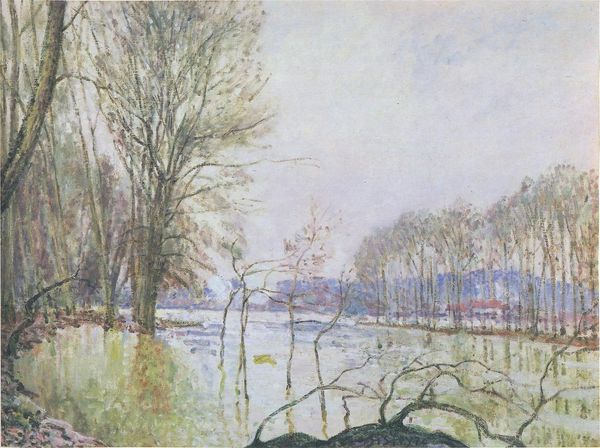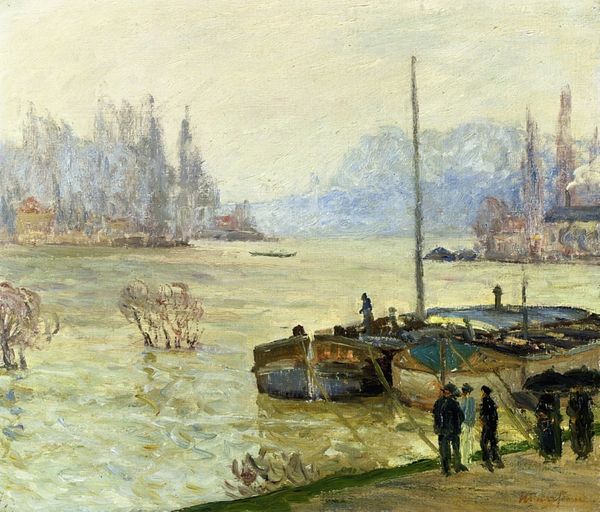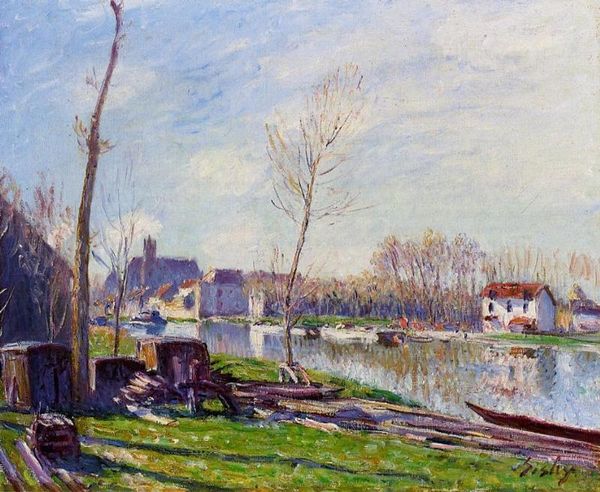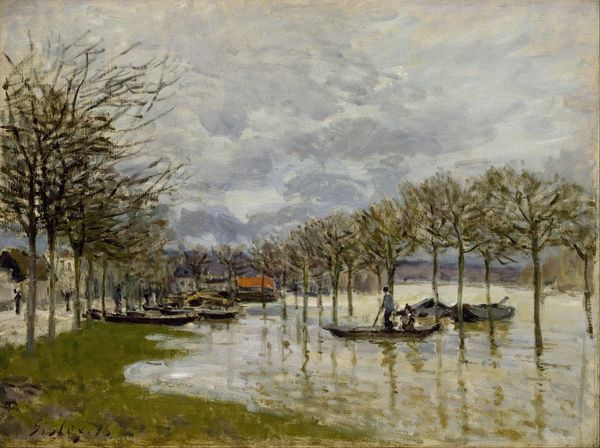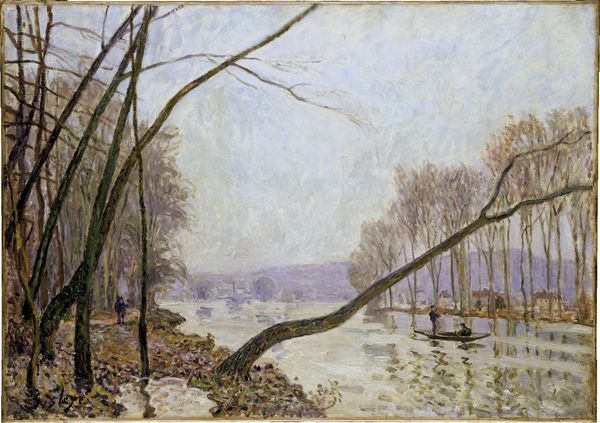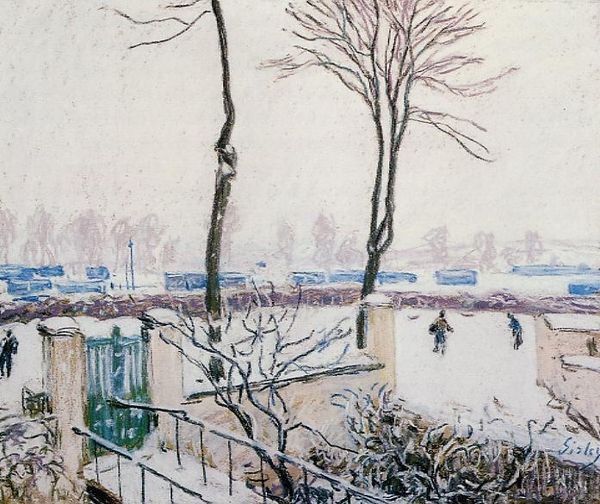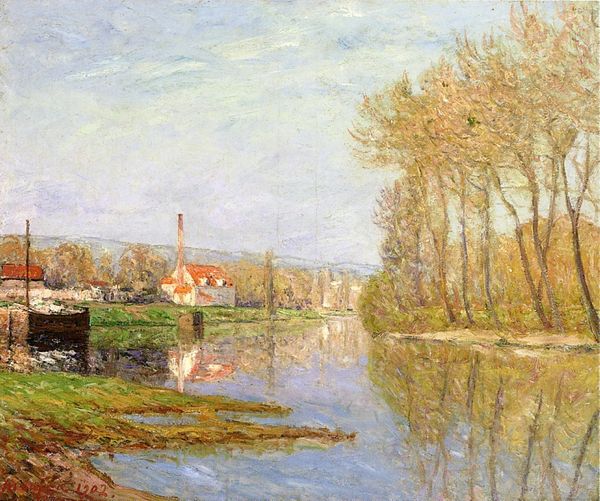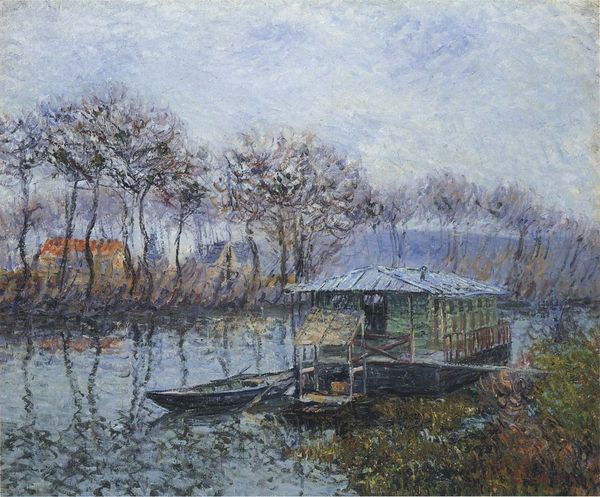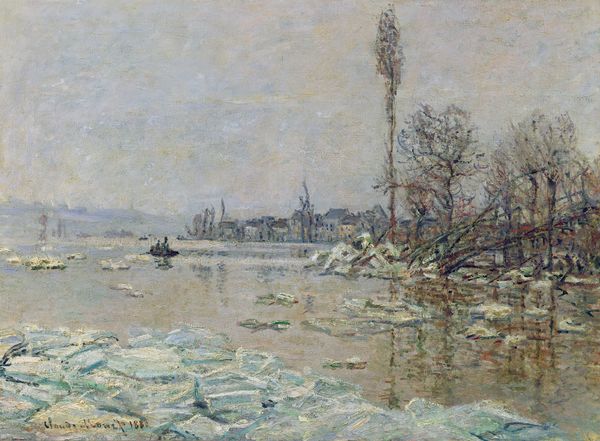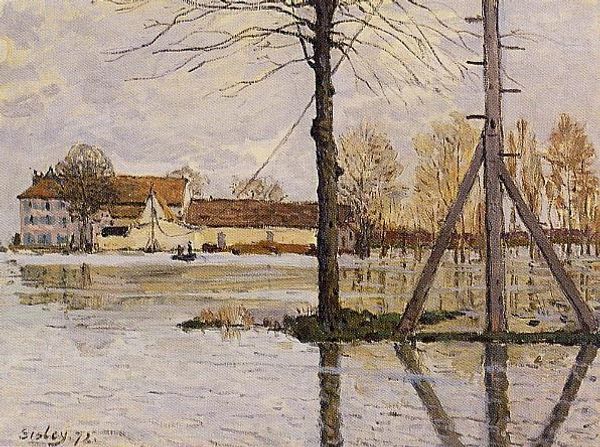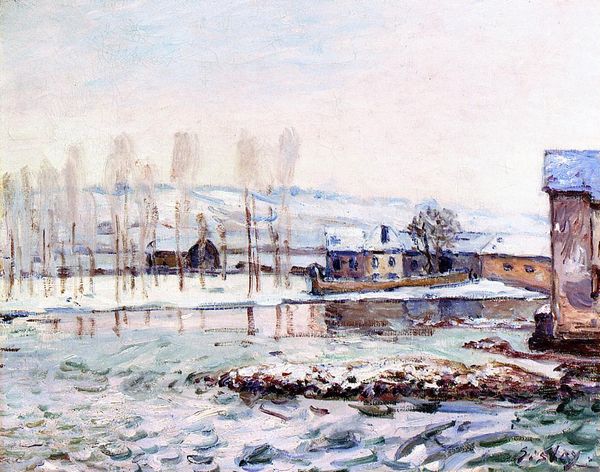
painting, plein-air, oil-paint
#
painting
#
impressionism
#
plein-air
#
oil-paint
#
landscape
#
oil painting
#
cityscape
Dimensions: 60 x 73 cm
Copyright: Public domain
Editor: So, this is Alfred Sisley’s "The Loing at High Water," painted in 1889. It’s an oil painting depicting a river scene, very much in the Impressionist style. It feels quite somber, almost monochromatic. What's striking to me is how ordinary the subject seems – a simple riverbank – and I wonder, what made Sisley choose this particular scene? Curator: It’s crucial to remember Impressionism emerged during a period of massive social and industrial change. Artists moved away from grand historical narratives, focusing instead on the everyday experiences of modern life. Sisley, in particular, repeatedly painted the River Loing. He wasn’t just capturing a visual scene but documenting a specific locale's evolving relationship with its inhabitants. Editor: So, was it a conscious decision to portray the impact of the modern on these locales? Curator: Absolutely. The “ordinary” riverbank is a conscious artistic choice. Look how the composition subtly positions the boat, the buildings in the background, even the bare tree, each suggesting different facets of society interacting within the environment. Sisley invites the viewer to consider how the rising waters might affect river traffic or daily life in the town, questions which are, in essence, very socially conscious. Do you see any elements that appear to contradict the supposed objectivity of the artist? Editor: I see how the high water almost swallows the structures, how Sisley highlights our relationship with the environment by reminding us of the temporality of our constructs... This makes me see how landscape can make commentary about power and change. Thank you, I didn’t think of that before! Curator: Precisely! Sisley offers us not just an image of the Loing but an invitation to engage with the changing realities of late 19th-century France. It makes you reconsider what "landscape" can truly represent, doesn't it?
Comments
No comments
Be the first to comment and join the conversation on the ultimate creative platform.
